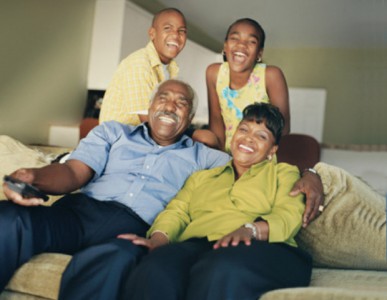- Because Our Children Are Watching
- Join the Cause
- Donate
Written by PTC | Published December 11, 2014
 going all the way back to I Love Lucy or Father Knows Best, there are other much more recent examples of the success of family-centric programming like: Home Improvement, Everybody Loves Raymond, 8 Simple Rules, and 7th Heaven.
Sadly, the broadcast networks have all but abandoned this tried and true formula in favor of more explicit fare.
This week, the PTC released a new report, Remembering Family which documents several disturbing findings. Among them:
99% of shows about family contain some form of adult content
81% of shows about family contain sexual content
94% of shows about family contain profanity
A more detailed analysis revealed even more troubling trends:
going all the way back to I Love Lucy or Father Knows Best, there are other much more recent examples of the success of family-centric programming like: Home Improvement, Everybody Loves Raymond, 8 Simple Rules, and 7th Heaven.
Sadly, the broadcast networks have all but abandoned this tried and true formula in favor of more explicit fare.
This week, the PTC released a new report, Remembering Family which documents several disturbing findings. Among them:
99% of shows about family contain some form of adult content
81% of shows about family contain sexual content
94% of shows about family contain profanity
A more detailed analysis revealed even more troubling trends:
1) Within the range of shows about family, some are typically considered “family-friendlier” than others (i.e. “Family Guy” vs. “The Michael J. Fox Show”). The study revealed that families are viewing sexual content and hearing explicit language even when choosing shows that are often considered “family-friendlier” options. 2) Even in the “family-friendlier” shows, explicit adult content was not only delivered by adult characters, explicit adult content was delivered by children. 3) Over half (54%) of the shows about family were rated TV-PG. However, the TV-PG shows were 5 times more likely not to include rating descriptors (D, L, S, V) that warn parents of the presence of explicit language compared to TV-14 shows 4) TV-PG shows were equally as likely to contain explicit language as TV-14 shows (93.6% and 93.5% respectively). Language on TV-PG programming included: Bleeped s-words, bleeped f-words, bitch, penis, son-of-a-bitch, dick, screw, vagina, slut, ass, banging, hell, douche, bone, piss, slut, whore, and more. 5) Seventy-three percent of the violent content was found in TV-14 shows and was appropriately rated to warn parents. Scenes that did contain violence but did not have a ‘V’ descriptor in the rating tended to be scenes that depicted milder forms of violence. 6) Some of the most explicit content identified in the study (e.g. pixilated nudity, bleeped profanity, etc.) aired on shows that would typically be considered “family-friendlier” fareBut don’t give up hope! Our new “Remembering Family” website is designed with you in mind, to help you find the resources and tips you need to create a better media environment for your family.
Tip #1 Realize that our kids are consuming information from all of their various personal media spaces (smartphones, tablets, television, video games, and more). Tip #2 One of the greatest tools parents can give their children is to promote the critical thinking skills necessary to understand the complex issues facing them every day. Tip #3 Help kids understand that issues in real life are sometimes over simplified by the media. This can be addressed by distinguishing issues from images and rhetoric from reality. Tip #4 Recognize that there is a difference between reality and the way media represents reality. Tip #5 Let your children know that it is OK to perceive the world different from the way media presents the world. Tip #6 Help your kids understand that media messages contain values and ideologies that can produce social and political consequences. Tip #7 Child development research shows that children under the age of eight have difficulty critically comprehending televised media messages and are prone to accept messages as truthful.To view the full report, click here.